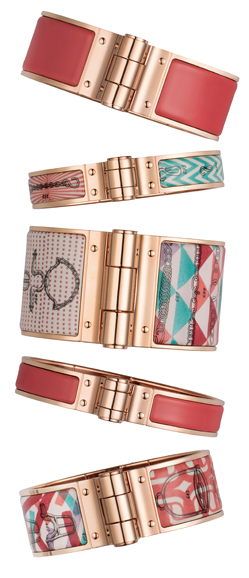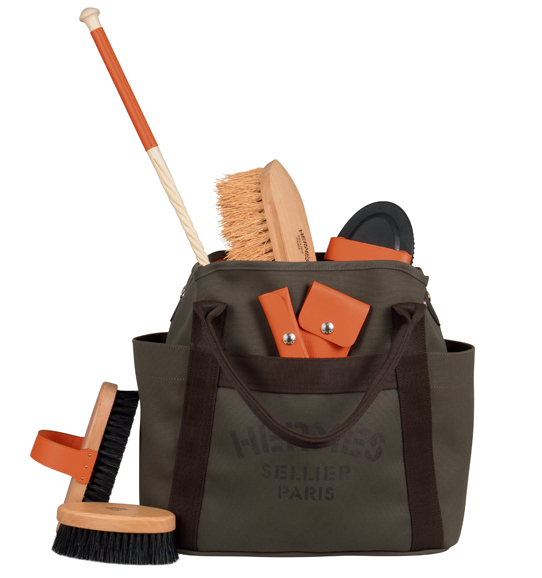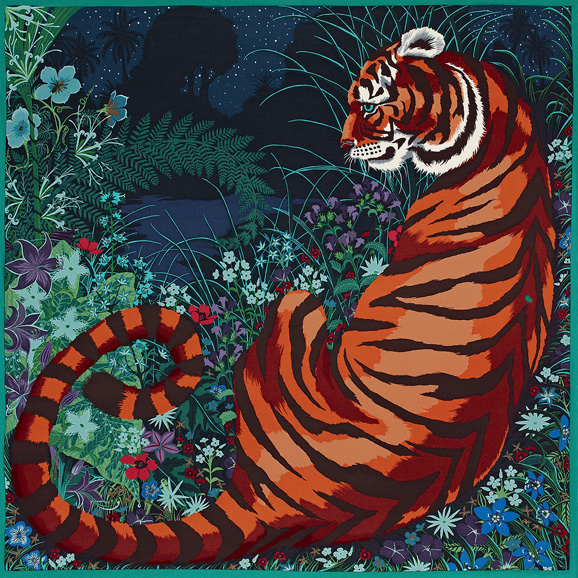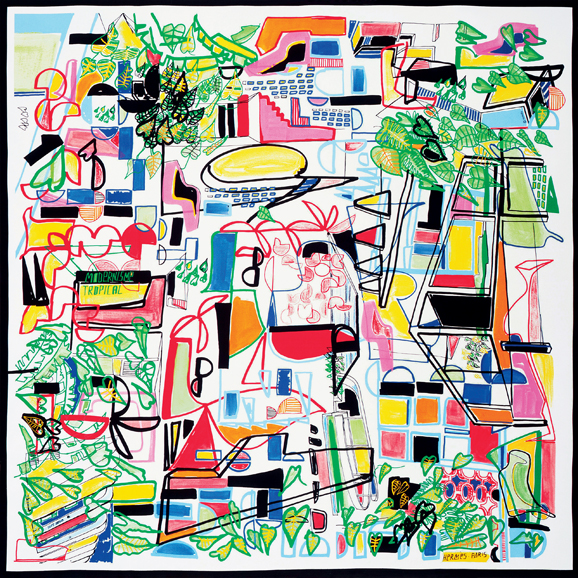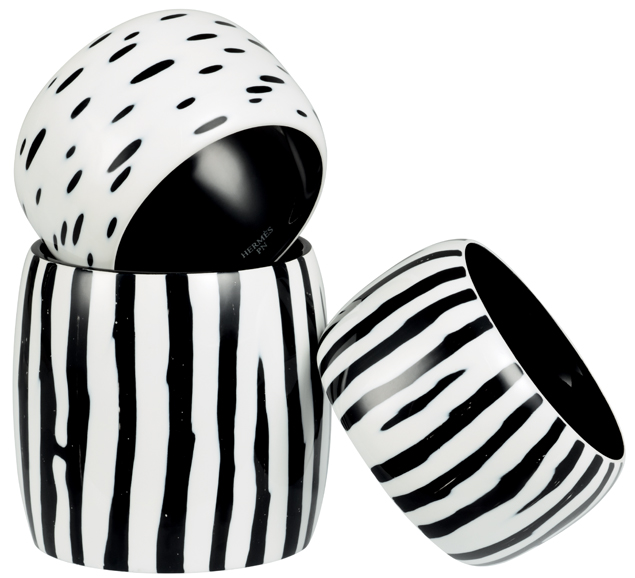Few luxury houses are more closely associated with nature than Hermès. From its foundation in 1837 by Thierry Hermès as a maker of bridles and harnesses for carriage horses, Hermès has increasingly embraced the panoply of the natural world in an array of brilliantly colored, richly textured, marvelously nuanced accessories and accoutrements — all while remaining true to its equestrian roots.
“The horse was Hermès’ first client,” Ménéhould de Bazelaire told an appreciative audience of some 100 attendees of her recent lecture on “Hermès: A Natural History” at the Bruce Museum in Greenwich. De Bazelaire is director of cultural heritage and curator of the Emile Hermès Museum — “a secret garden” of private, family equestrian artwork and antiques that sits atop the Hermès flagship on fashionable Rue du Faubourg Saint-Honoré in Paris. (Her lecture was held in conjunction with the Bruce-Hermès exhibit “Fierce and Fragile: Big Cats in the Art of Robert Dallet,” which we wrote about in WAG’s February “Celebrating Love” issue.)
The horse, de Bazelaire added, is “what gave the house (of Hermès) wings, its idea of beauty, nature, elegance.”
To say nothing of its logo of a horse-drawn carriage led by a groom — “a symbol of the harmony of human intelligence and animal strength,” she said — as well as its theme for this year, “Nature at Full Gallop.”
But if Hermès continues to outfit horse, rider and stable, often in its signature orange, it has since the 1920s expanded its horizons to draw inspiration from other natural forms for clothing and accessories that transcend the equine world — as demonstrated by de Bazelaire’s lecture. Like a great Hermès silk scarf, it teemed with color, texture, life and image after image of Hermès collection-inspired objets that had the viewer-listener secretly lusting, “I’ll take one of these and I must have one of those.”
“Humankind has always been fascinated by animals,” de Bazelaire observed as she presented an image of “Premières Mains,” a 2002 Hermès scarf based on a design by Zoé Pauwels that swirls with bulls, bison, stags and horses from the prehistoric caves of Lascaux. “We see them as alter egos.”
A furry dog-shaped pouch, “Fourre-toutou,” and a seal-shaped cushion for the beach, both 1930; a scarf dotted with frolicking monkeys by Charles Pittner (“Les Singes,” 1939); beetle brooches in gold and semiprecious stones, 1958; a gold mouse brooch, 1963; and a peacock-feathered parasol under which Catherine Deneuve posed fetchingly in 1962 to promote her film “The Umbrellas of Cherbourg” — these attest to the long tradition of creative dialogue between the animal kingdom and Hermès’ designers.
That kingdom includes the human animal as well. De Bazelaire’s images featured one of Hermès’ signature Kelly bags — an adaptation of the company’s saddle bag made famous by a 1956 Life magazine photograph of the pregnant Princess of Monaco, the former actress Grace Kelly, using it to shield her growing belly from the prying paparazzi. This bag was “graced” by the princess’ beautiful face.
Other celebrated Hermès fans have included President John F. Kennedy, who carried a Hermès black alligator briefcase, and Queen Elizabeth II, who sported an Hermès scarf as a kerchief when she rode on horseback with President Ronald Reagan at her side.
But it is to the four-legged creatures of this world — particularly the endangered ones — that Hermès has given its heart. Together with the nonprofit Panthera, Hermès has established the Robert Dallet Initiative for Wild Cat Conservation in tribute to the wildlife artist whose drawings and paintings of the big cats inspired Hermès for almost 20 years. In January, Sotheby’s auctioned six one-of-a-kind Hermès objects decorated with Dallet’s work, with all proceeds going to Panthera. In addition, a portion of the revenues from Hermès’ charitable scarf — created from Dallet’s “Panthera Pardus,” a depiction of a taut, focused leopard slinking through the grasses — will benefit Panthera as well.
As Hermès’ artistic director Pierre-Alexis Dumas — great-great-great grandson of the company’s founder — says in the companion coffee-table book “Fierce and Fragile:” “We have always worked in relation to nature…. We are living together and biodiversity is a question of balance. We are pushing for the finest quality and for an equally fine awareness of what we use, and how we use it.”
For more, visit hermes.com and Hermès Greenwich, 289 Greenwich Ave. 203-622-3007.



